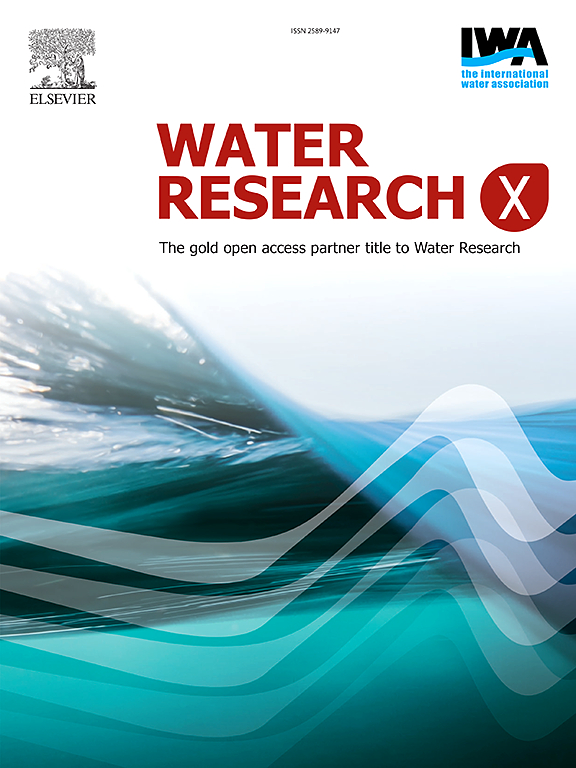利用废水分析评估中国两个不同人群的健康状况
IF 8.2
2区 环境科学与生态学
Q1 ENGINEERING, ENVIRONMENTAL
引用次数: 0
摘要
基于废水的流行病学(WBE)是监测人类健康状况生物标志物的有力工具。WBE 方法可提供具有高时间和空间分辨率的强大公共卫生数据,使其在评估公共卫生干预措施对不同人群的影响时非常有效。本研究应用 WBE 比较了两个不同人群的药物使用情况,并探讨了其对公共卫生的影响:一个是普通城市人群,另一个是大学人群。研究人员从 2017 年至 2018 年收集了每日和每周的废水样本,这些样本来自为城市集水区提供服务的污水处理厂和涵盖 10 所大学的泵站。对这两个人群的非处方药(OTC)、处方药和慢性病药物的消耗量进行了估算。此外,我们还分析了之前公布的有关娱乐性物质、呼吸道和过敏药物、甜味剂、压力指标和合成代谢类固醇的数据,以全面了解人类的生活方式和健康状况。我们的研究结果表明,与普通人群相比,大学人群消费了更多的非处方药止痛药,包括布洛芬和扑热息痛,但消费了较少的处方类阿片,如可待因和吗啡。与此相反,与年轻的大学生群体相比,城市人口的慢性病药物消费量较高,这表明他们的总体健康状况较差。这些发现凸显了年轻人群和普通人群在药品消费模式和相关公共健康状况方面的显著差异。这项研究强调了世界生物多样性指数在确定公共卫生差异以及根据特定人群的需求和行为指导有针对性的卫生干预措施方面的实用性。本文章由计算机程序翻译,如有差异,请以英文原文为准。

Using wastewater analysis to assess the health status of two distinct populations in China
Wastewater-based epidemiology (WBE) is a powerful tool for monitoring biomarkers of human health conditions. The WBE approach could deliver robust public health data with high temporal and spatial resolution, making it highly effective for assessing the impact of public health interventions across different populations. This study applied WBE to compare substance use and explore public health implications across two distinct populations: a general urban population and a university population. Daily and weekly wastewater samples were collected from 2017 to 2018, originating from a wastewater treatment plant serving the urban catchment and a pump station encompassing 10 universities. Consumption of over-the-counter (OTC) medications, prescribed drugs, and chronic disease medications in these two populations were estimated. Additionally, previously published data on recreational substances, respiratory and allergy medications, sweeteners, stress markers, and anabolic steroids were analyzed to present a comprehensive overview of human lifestyles and health status. Our results indicated that the university population consumed more OTC painkillers, including ibuprofen and paracetamol, but fewer prescribed opioids, such as codeine and morphine, compared to the general population. In contrast, higher consumption of chronic disease medications in the urban catchment indicated poorer overall health compared to the younger university population. These findings highlight significant differences in pharmaceutical consumption patterns and associated public health profiles between younger and general populations. This study underscores the utility of WBE in identifying public health disparities and guiding targeted health interventions based on population-specific needs and behaviors.
求助全文
通过发布文献求助,成功后即可免费获取论文全文。
去求助
来源期刊

Water Research X
Environmental Science-Water Science and Technology
CiteScore
12.30
自引率
1.30%
发文量
19
期刊介绍:
Water Research X is a sister journal of Water Research, which follows a Gold Open Access model. It focuses on publishing concise, letter-style research papers, visionary perspectives and editorials, as well as mini-reviews on emerging topics. The Journal invites contributions from researchers worldwide on various aspects of the science and technology related to the human impact on the water cycle, water quality, and its global management.
 求助内容:
求助内容: 应助结果提醒方式:
应助结果提醒方式:


